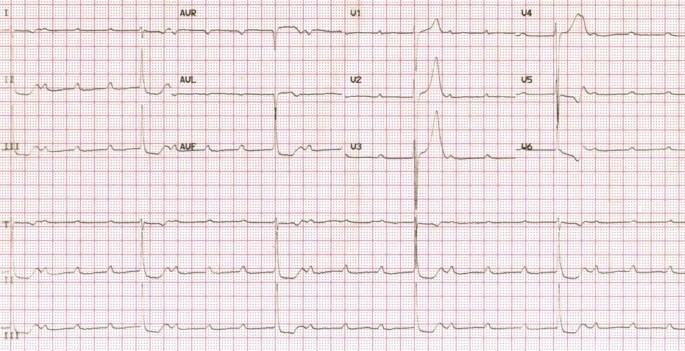Adams-Stokes syndrome, also known as Stokes-Adams attacks, is a type of cardiac syncope caused by a sudden and transient disturbance in the heart’s rhythm, often due to a temporary interruption in the heart’s electrical conduction system. This results in a sudden drop in cardiac output and cerebral blood flow, leading to fainting or near-fainting episodes.
Symptoms
The symptoms of Adams-Stokes syndrome typically include:
- Syncope (Fainting): Sudden loss of consciousness, usually without warning, lasting a few seconds to a few minutes.
- Pre-Syncope Symptoms: These might include dizziness, lightheadedness, and feeling faint.
- Palpitations: Awareness of rapid, slow, or irregular heartbeats.
- Convulsions: In some cases, especially if the syncope is prolonged, there may be convulsive movements due to cerebral hypoxia.
- Pallor: Pale appearance due to reduced blood flow.
- Slow Pulse: During the attack, the pulse is often very slow (bradycardia).
Causes
Adams-Stokes syndrome is primarily caused by disturbances in the electrical system of the heart, including:
- Heart Block: Most commonly associated with complete heart block (third-degree AV block) where the electrical signals between the atria and ventricles are completely blocked.
- Sinus Node Dysfunction: Malfunction of the heart’s natural pacemaker.
- Ventricular Tachycardia: Rapid heart rate originating from the ventricles.
- Medications: Certain drugs, particularly those affecting heart rate and rhythm, can precipitate attacks.
- Coronary Artery Disease: Reduced blood flow to the heart muscle.
- Myocarditis: Inflammation of the heart muscle.
- Electrolyte Imbalances: Abnormal levels of potassium, calcium, or magnesium.
Treatment
Treatment for Adams-Stokes syndrome aims at correcting the underlying cause and preventing future episodes:
- Pacemaker: Permanent pacemaker insertion is the most common and effective treatment, especially for those with heart block or significant bradycardia.
- Medications: Antiarrhythmic drugs may be used to control tachyarrhythmias. Adjusting or stopping medications that contribute to heart block may be necessary.
- Emergency Care: In an acute setting, atropine or isoproterenol may be administered to increase heart rate temporarily.
- Lifestyle Changes: Managing underlying conditions such as coronary artery disease or hypertension.
Prevention
Preventive measures focus on managing the risk factors and underlying causes:
- Regular Monitoring: Individuals with known heart conditions should have regular check-ups and monitoring of their heart rhythm.
- Medication Management: Ensuring that medications are properly managed and adjusted as needed.
- Healthy Lifestyle: Maintaining a healthy lifestyle with a balanced diet, regular exercise, and avoiding smoking and excessive alcohol consumption.
- Prompt Treatment of Cardiac Conditions: Early and effective treatment of conditions like coronary artery disease, hypertension, and myocarditis.
- Electrolyte Balance: Monitoring and managing electrolyte levels, especially in individuals with conditions that predispose them to imbalances.
Adams-Stokes syndrome requires prompt diagnosis and management to prevent complications such as injury from falls during fainting episodes and to improve the patient’s quality of life through appropriate treatment and preventive strategies.
































